With Steel & Tube celebrating 70 years in New Zealand industry, we look back on the fascinating beginnings of our company. In this post, we examine how the merger of three steel merchandising companies and a listing on the NZ stock exchange set an ambitious tone for the organisation in the 1950s and 1960s.
In the early summer of 1953, as New Zealanders prepared to celebrate Christmas, set off on camping holidays and follow the progression of the new Queen Elizabeth’s royal visit to their country, a short notice was posted in the Press newspaper.
It was titled ‘Steel and Tube, Incorporated’.
Readers of the Press on that morning were informed that the interests of three steel merchandising companies – Stewarts and Lloyds of New Zealand, the Iron and Steel Company of New Zealand and McLean and Todd – had been merged to form the Steel and Tube Company.
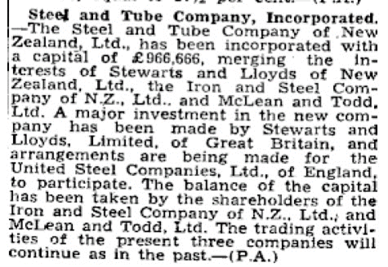
Figure 1: Announcement in the Press, 16 December 1953. Source: The Press (Stuff Ltd).
New Zealand in the 1950s was going through a period of wartime recovery and growth. In 1953 alone, nearly 30,000 immigrants arrived in Aotearoa to put down roots, bolstering a national population of just over 2 million.
Earlier in 1953, as Edmund Hillary put together the final preparations for his historic Everest ascent, Stewarts and Lloyds of New Zealand had proudly announced that galvanised water pipes were again available in the country after years of wartime shortages.
Stewarts and Lloyds emerged from an original UK parent company, established in 1903 and headquartered in Glasgow. The company was well established in New Zealand, appearing in council records as early as 1922, supplying thick steel pipes for an extension of the Waipori pipeline in Otago – a scheme crucial to the increasing power needs of Dunedin.
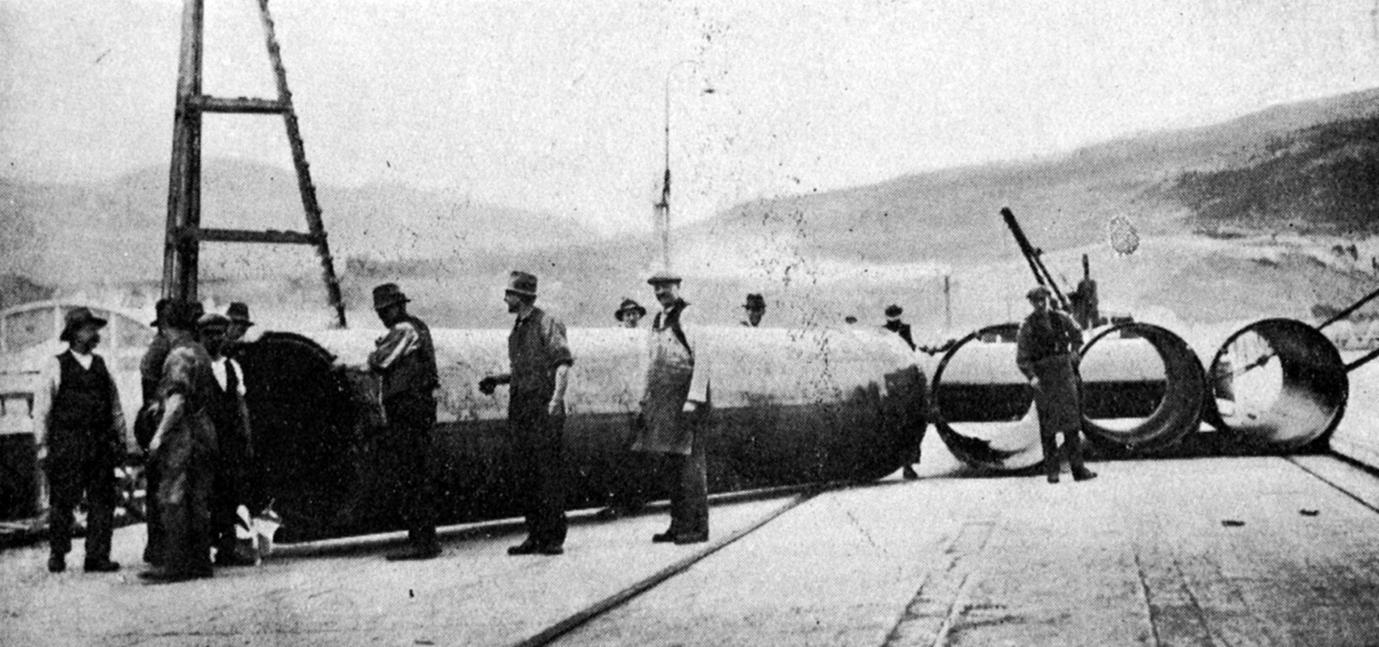
Figure 2: Three-quarter-inch thick steel pipes, the largest welded steel pipes seen in New Zealand, arrive from Glasgow for the Waipori hydroelectric scheme. This photo appeared in the Otago Witness, 14 November 1922. Source: Otago Images / Otago Daily Times
Stewarts and Lloyds was considered a “foreign company” until 1940, when it registered as a private entity in New Zealand, with an office at 39 Johnston St, Wellington.
While Stewarts and Lloyds of New Zealand was being formalised in the southern hemisphere, its original UK parent company was busy with the war effort.
Stewarts and Lloyds in the UK become a key part of the ‘Pipe Line Under the Ocean’ (PLUTO) programme, providing fuel for the D-Day invasion. The company’s factory created a series of huge, buoyant steel drums, called Conundrums, that would hold coiled pipe which would be laid as the drums were towed across the English Channel.
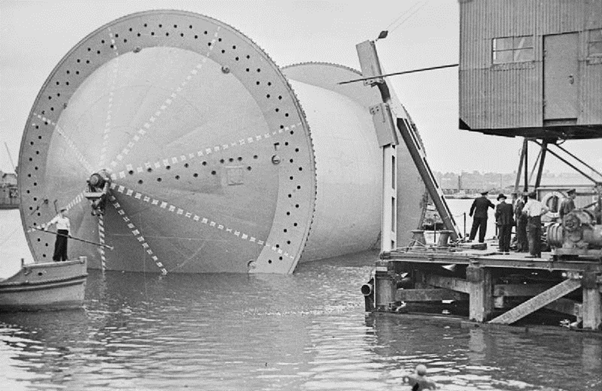
Figure 3: A 'Conundrum', built by Stewarts and Lloyds, being moved into position into a specially constructed dock in preparation for the winding on of the pipe. (IWM-T-30-Conundrum-preparation (copyright-free Imperial War Museum)
McLean and Todd Ltd formed in January 1935, with its three main shareholders based in Wellington – George Archibald McLean, D Todd and George’s son John Fraser McLean. In December of that year, the board of Napier Harbour accepted the company’s tender to supply and deliver steel rails to them.
The Iron & Steel Company of New Zealand was established in 1914, a subsidiary of the Otago Iron Rolling Mills Company Ltd, which was formed in 1890 by William Orr Smellie Senior, John Smellie and The Hon. Alfred Lee Smith. The Smellie family immigrated en masse to New Zealand in 1886. They chose Dunedin as the location for their business, due to its status at the time as the country’s chief commercial town.
Steel and Tube Company Incorporated
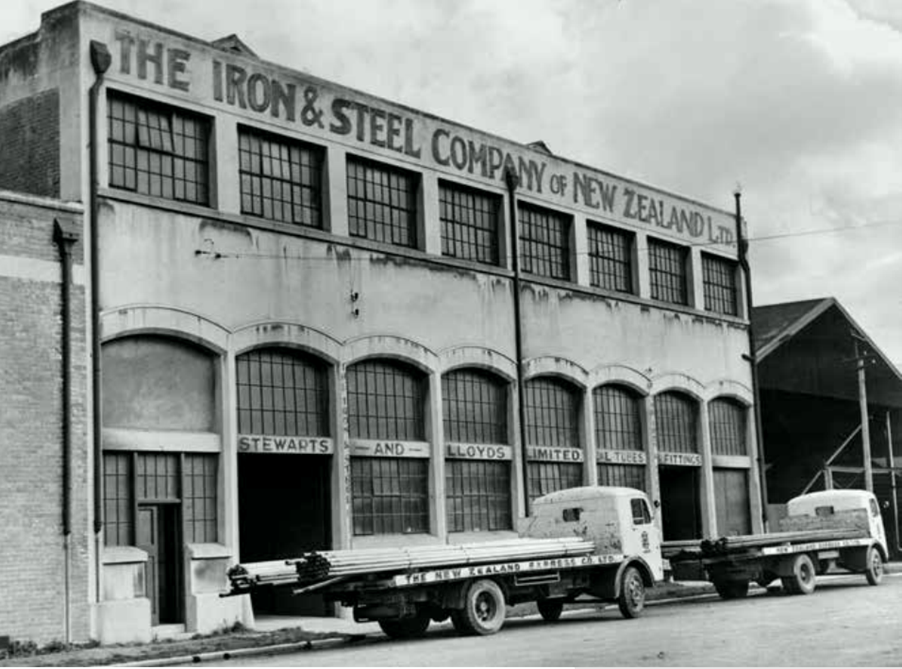
Figure 4: Archive photograph of a building bearing the name of both Stewarts and Lloyds and The Iron & Steel Company of New Zealand Ltd. Credit: Steel and Tube.
The public announcement that was made on 16 December 1953 stated: “The Steel and Tube Company of New Zealand, Ltd., has been incorporated with a capital of £966,666, merging the interests of Stewarts and Lloyds of New Zealand, Ltd., the Iron and Steel Company of N.Z., Ltd., and McLean and Todd, Ltd. A major investment in the new company has been made by Stewarts and Lloyds, Limited, of Great Britain, and arrangements are being made for the United Steel Companies, Ltd., of England, to participate. The balance of the capital has been taken by the shareholders of the Iron and Steel Company of N.Z., Ltd., and McLean and Todd, Ltd. The trading activities of the present three companies will continue as in the past. – (P.A.)”
After no doubt lengthy negotiations, the three steel merchants were combining forces, although they continued to win contracts as separate entities. For instance, in 1963, Stewarts and Lloyds and the Iron & Steel Company featured in a combined newspaper advertisement to highlight their work for the Christchurch Gas Company.
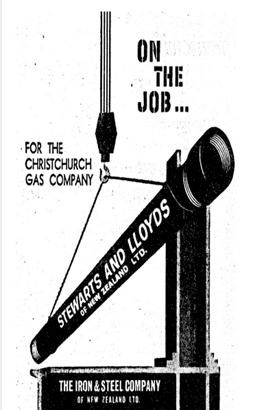
Figure 5: A 1963 joint advert for Stewarts and Lloyds and the Iron & Steel Company. Source: The Press (Stuff Ltd).
The advert described Stewarts and Lloyds’ long-time association with the gas company, including many years of “supplying steel pipe and Viking Johnson Flexible Couplings”.
A public company
A milestone came in 1967 when the Steel and Tube Company announced plans to sell over 600,000 shares with a public listing on New Zealand’s stock exchange, the NZX.
Chairman Frank Kember – a former chairman of the Iron & Steel Company and described in newspapers of the time as ‘a Wellington public accountant’ – gave more details to the press. He said that Stewarts and Lloyds of the UK and existing New Zealand shareholders considered it to be in the best interests of the private company for the NZ public to participate in its activities and future development.
In mid-September of that year, 614,000 “ordinary shares” were offered for sale to the public at a price of “$1 each at $2”.
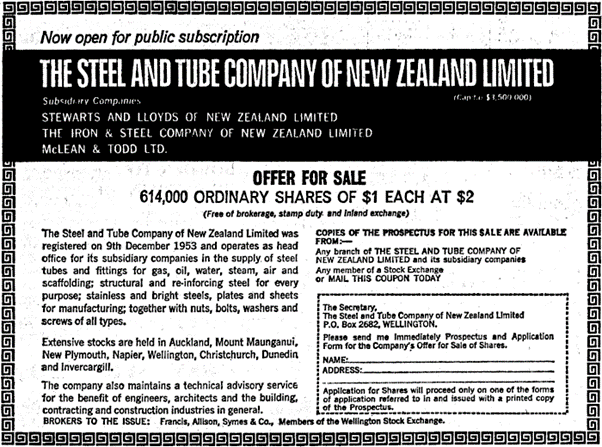
Figure 6: Steel and Tube’s 1967 share offer advertisement. Source: The Press (Stuff Ltd).
At the end of that month, the Steel and Tube Company of New Zealand Ltd was granted a listing on the NZX.
With old faces and new, the company embarked on a new era, navigating its way through a very different New Zealand.
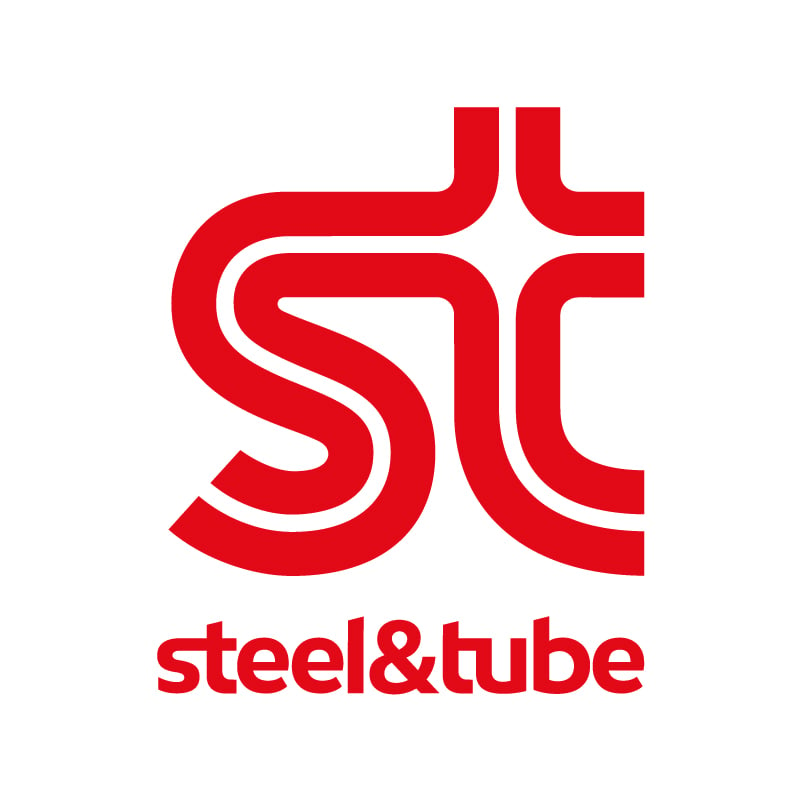









Let Us Know What You Thought about this Post.
Put your Comment Below.